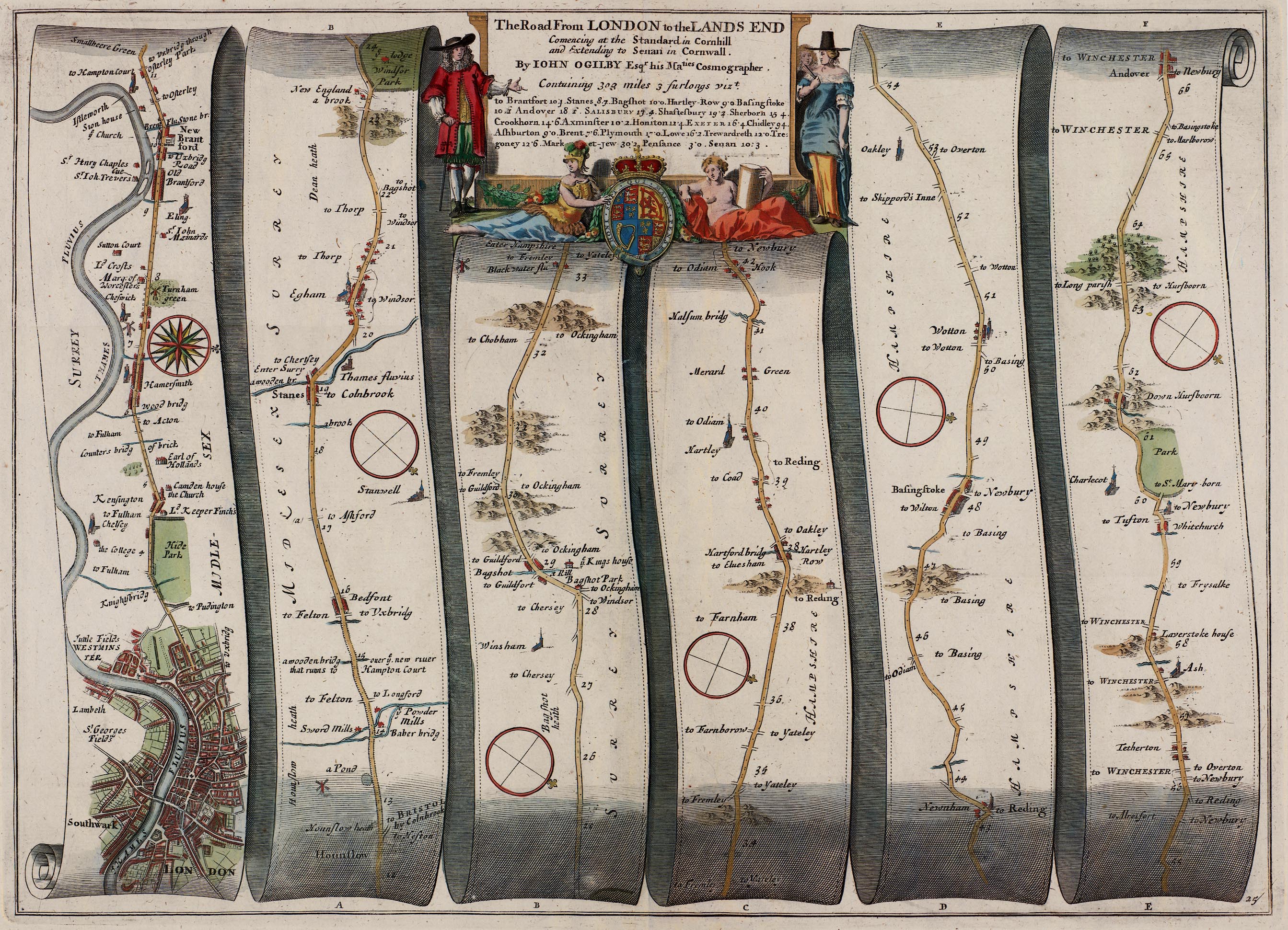10th January 2020
One of England’s very first female travellers, Celia Fiennes, was born on 7 June 1662 in Salisbury. She was the daughter of Nathaniel Fiennes, a colonel in Cromwell’s army, and his second wife Frances, who were prominent staunch parliamentarians. Celia is known for her travels throughout England and Scotland, riding sidesaddle on her horse, often with only one or two servants accompanying her. Over 100 years before stagecoaches, she is remarkable as the first woman to visit every county in England. Along her travels, she kept notes and details of her journeys, which she complied into a journal for her family in 1702. Unacknowledged excerpts from this journal were published in 1812 but it wasn't until 1888 that one of Celia’s descendants – Emily Griffiths – transcribed, edited and published the journal in its entirety. She titled it ‘Through England on a Side Saddle in the Time of William and Mary’ and it provides a unique insight into Celia herself, as well as into life in the seventeenth century.
Unusually for this period, Celia did not marry. The combination of this and her family’s wealth likely explains the freedom and opportunity that she had for such adventurous travel. At the time, travel for pleasure was still very unusual and as an enthusiastic female traveller, Celia was exceptional. Her explorations started as a way ‘to regain my health by variety and change of aire and exercise’ in the south of England and then continued as a way to visit relatives, and out of sheer curiosity.
Much of her journal describes the local food she sampled, the roads she travelled on and the houses she stayed at, including some stately homes she visited. She took a special interest in mining and industry. In her earliest travels, she went to Salisbury and visited Stonehenge, which she called Stoneage, and counted the stones. She visited Bath and described using the hot springs – noting the bad smell of them. Bath itself she found boring, saying ‘ye town and all its accomodations is adapted to ye batheing and drinking of the waters and to nothing else’. She visited several counties with her mother, and at Reading she mentions that in one of the churches ‘lyes buried one of my sisters that Dyed at my Grandmothers there of the small pox’.
Celia was a plain speaking woman, and evidently felt that everyone would benefit from travelling in their own country more. In her introduction she says ‘that if all persons, both Ladies, much more Gentlemen, would spend some of their time in Journeys to visit their native Land, and be curious to inform themselves and make observations of the pleasant prospects, good buildings, different produces and manufactures of each place … would be a souveraign remedy to cure or preserve ffrom these Epidemick diseases of vapours, should I add Laziness?'
In 1698, she undertook a ‘Great Journey’ to Newcastle and Cornwall, first travelling through several counties north to Newcastle – and also making a visit to Scotland, covering over 600 miles in 6 weeks. After that she went back south and then west to Cornwall, where she visited Land’s End – the most westerly point of England. Land’s End was very rocky, and Celia ‘Clamber’d over them as farre as safety permitted me’.
Celia lived much of her life in London where she had a married sister, and she also took time to describe the city. She even recalls the funeral of Queen Mary, wife of William of Orange, and says that the king ‘ommitted noe Ceremony of Respect to her memory and remains’.
While she had a few accidents on her travels, only once did she encounter highwaymen. On her way to Whitchurch she describes this: ‘2 fellows all on a suddain from ye wood fell into ye Road, they Look’d truss’d up with great Coats and as it were bundles about them wch I believe was pistolls’. However, Celia and her servants were lucky as it was market day in Whitchurch and as they approached the busy town, the highwaymen left them alone, likely due to the crowds.
Celia lived to be 78 years old, dying at Hackney in 1741. Today her legacy is remembered by a memorial near Whitchurch to commemorate the 300th anniversary of her ‘Great Journey’, and also possibly by the famous nursery rhyme ‘Ride a Cock-Horse to Banbury Cross’ which features ‘a fine lady upon a white horse’. It has been suggested that due to family connections to the area and a play on the words fine and Fiennes, Celia’s adventures could indeed have been immortalised in this rhyme.
A rhyme that would certainly have been sung in childhood by another great adventurer and descendant of Celia – Sir Ranulph Fiennes.
Image: The Road from LONDON to the LANDS END Commencing at the Standard in Cornwall and Extending to Senan in Cornwall, 1675, by John Ogilby, via Wikimedia Commons
